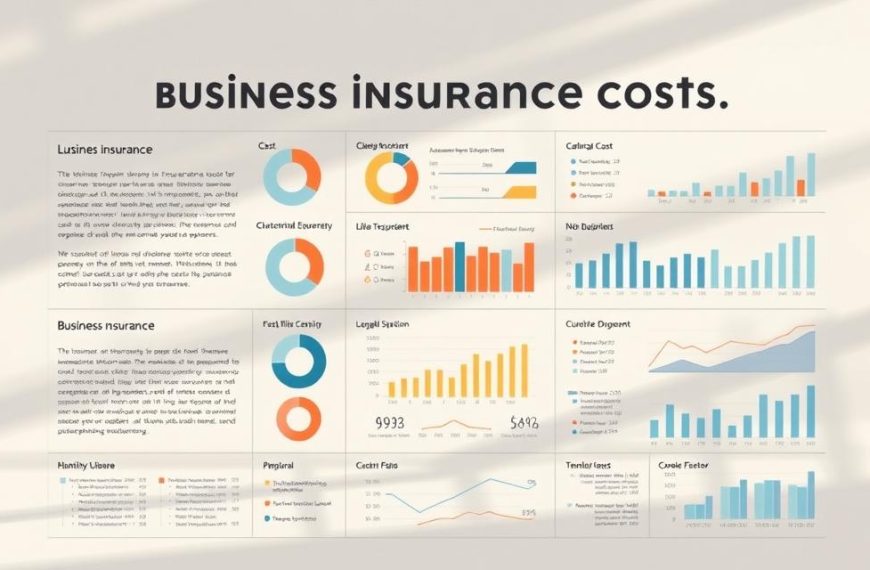Starting a new venture often requires significant financial investment. From purchasing equipment to managing cash flow, entrepreneurs frequently rely on external funding solutions. Understanding the business loan landscape is crucial for making informed decisions that align with your company’s objectives.
Preparation remains the cornerstone of successful financing applications. Lenders prioritise detailed business plans, credible revenue projections, and robust credit histories. Strategic planning helps demonstrate your enterprise’s viability, increasing approval odds for competitive lending products.
Securing capital presents challenges, particularly for newer small business owners. Traditional banks, alternative financiers, and government-backed programmes each offer distinct advantages. Evaluating interest rates, repayment terms, and eligibility criteria ensures you select the most suitable option.
Maintaining organised financial records and monitoring credit scores strengthens your position during negotiations. This proactive approach not only streamlines the application process but also positions your firm for favourable terms. With careful research and preparation, accessing vital funds becomes an achievable milestone for growth-focused enterprises.
Introduction to Business Loan Essentials
Accessing capital efficiently can determine a company’s trajectory in competitive markets. Entrepreneurs must evaluate multiple financial tools to support their objectives while managing risk effectively.
Understanding Business Financing Options
Modern enterprises typically utilise three primary funding methods. Personal credit lines leverage individual assets like credit cards or home equity. Business credit lines offer flexible borrowing limits with scheduled repayments. Term loans provide fixed sums repaid over three years or longer.
Secured financing requires collateral, such as property or equipment. Unsecured options rely on creditworthiness but often carry higher interest rates. Each structure serves distinct purposes – startup capital, expansion projects, or bridging cash flow gaps.
Defining Key Loan Terminology
Interest rates directly impact repayment amounts over time. Collateral refers to assets pledged against borrowed money. Repayment schedules outline instalment timelines and amounts.
Commercial banks prioritise established credit histories, while online platforms may focus on revenue potential. Credit unions often provide personalised services for local small businesses. Understanding these differences helps owners align needs with suitable lenders.
Eligibility Requirements and Application Basics
Securing financing hinges on meeting specific lender criteria and presenting a compelling case for your enterprise. Institutions assess multiple factors, from documentation quality to financial responsibility indicators, before approving funding requests.
Preparing a Robust Business Plan
A business plan acts as your company’s financial blueprint. Include realistic earnings forecasts, market analysis, and operational strategies. Lenders favour proposals showing:
- Three-year revenue projections
- Breakdown of expenses and profit margins
- Competitor landscape evaluation
One banking executive notes: “Clear repayment roadmaps separate successful applications from wishful thinking.” Support your plan with tax returns, balance sheets, and cash flow statements for credibility.
Maintaining Strong Personal and Business Credit
Financial institutions scrutinise both business personal credit histories. Scores above 680 typically secure better terms. Key practices include:
- Timely bill payments across all accounts
- Keeping credit utilisation below 30%
- Regularly checking reports for errors
Newer ventures often face closer scrutiny of owners’ credit profiles. Establish separate financial accounts for your company to build its independent rating while protecting personal assets.
Strategies on How to Get a Business Loan
Entrepreneurs must showcase stability and foresight to attract favourable loan terms. Transparent financial storytelling strengthens applications, particularly when aligned with institutional priorities. Credible documentation often outweighs ambitious claims in lender evaluations.
Documenting Financial Projections and History
Lenders prioritise three-year forecasts grounded in market realities. Compare past performance with growth assumptions using this framework:
| Projection Type | Timeframe | Key Metrics |
|---|---|---|
| Revenue Growth | 24 months | Monthly sales trends |
| Expense Management | 12 months | Overhead vs profit ratios |
| Market Expansion | 36 months | Customer acquisition costs |
Include historical tax filings and bank statements. These validate management competence better than narrative explanations.
Meeting Lender and Legal Criteria
US-based enterprises must demonstrate operational legitimacy through:
- State registration certificates
- Employer Identification Number (EIN)
- Industry-specific licences
Lenders typically verify physical business addresses and ownership structures. A sound credit profile remains non-negotiable – aim for scores above 650. For strategic documentation practices, consult the comprehensive financing guide.
Align repayment plans with cash flow patterns. Quarterly instalments often suit seasonal ventures better than monthly schedules. This tailored approach increases approval likelihood for essential funds.
Navigating SBA-Guaranteed Loan Programmes
Government-backed financing programmes provide vital support for enterprises facing conventional lending barriers. The small business administration bridges funding gaps through its flagship initiatives, offering structured solutions for diverse operational needs.
Overview of SBA 7(a) and Microloan Programmes
The SBA 7(a) loan serves as the administration’s most versatile product. Borrowers utilise these funds for real estate acquisitions, equipment purchases, or working capital needs. Unlike standard commercial loans, 7(a) agreements feature extended repayment periods and lower collateral demands.
Microloans address smaller-scale requirements, capping at £50,000. Non-profit intermediaries distribute these funds for inventory upgrades or machinery investments. One programme manager explains: “Our focus lies in empowering underserved entrepreneurs through accessible capital and mentorship.”
Understanding Negotiated Loan Terms
While the small business administration sets baseline criteria, lenders and borrowers collaboratively finalise loan terms. Interest rates typically align with prime rates plus 2-4%, with repayment schedules spanning 10-25 years for real estate projects.
Key negotiation points include:
- Down payment percentages (often 10-30%)
- Collateral valuation methods
- Prepayment penalty structures
Institutions offering SBA-guaranteed loans assume reduced risk through government backing. This security enables competitive rates for borrowers who demonstrate viable repayment strategies. Always compare multiple lenders to secure optimal loan terms within programme guidelines.
Exploring Various Types of Business Financing
Companies require tailored financial solutions to address operational demands and strategic goals. Selecting appropriate funding structures directly influences cash flow management and long-term sustainability.
Term Loans and Short-Term Financing Tools
Term loans deliver fixed capital sums repaid through scheduled instalments over three years or longer. These agreements suit equipment purchases or commercial vehicle acquisitions, often using the asset itself as collateral. A financial advisor notes: “Predictable repayments help enterprises budget effectively while building lender trust.”
Short-term options address immediate needs like inventory restocking or seasonal staffing. These typically span 3-18 months with faster approval processes. Unlike multi-year commitments, they prioritise rapid access over extended repayment flexibility.
Business Lines of Credit Explained
Revolving credit facilities allow repeated borrowing up to approved limits. Companies draw funds as required, paying interest only on utilised amounts. This structure proves invaluable for managing unexpected expenses or bridging revenue gaps.
Key advantages include:
- No collateral requirements for smaller credit lines
- Interest rate savings compared to multiple short-term loans
- Immediate access during financial emergencies
While term loans lock in capital for specific purposes, credit lines offer adaptable solutions for evolving business needs. Evaluating both options ensures enterprises secure financing aligned with their operational rhythms.
Maintaining and Monitoring a Solid Credit History
A strong credit foundation opens doors to favourable financial opportunities. Regular oversight ensures your profile remains accurate and resilient against unexpected challenges. This proactive approach supports long-term operational stability.
Strategies to Protect Your Credit Score
Payment history contributes 35% to most credit score calculations. Prioritise settling bills before due dates, even for smaller amounts. High balances relative to limits harm ratings – keep utilisation below 30% across all accounts.
Consider this breakdown of scoring factors:
| Factor | Impact | Recommended Action |
|---|---|---|
| Payment History | 35% | Set automatic reminders |
| Credit Utilisation | 30% | Request limit increases |
| Credit Mix | 15% | Maintain diverse account types |
| History Length | 15% | Avoid closing old accounts |
Tips for Monitoring Credit Reports
US residents access free weekly reports from Equifax, Experian, and TransUnion. Scrutinise entries for:
- Unauthorised account openings
- Incorrect payment statuses
- Outdated personal information
Dispute errors through official channels within 30 days. Many institutions offer real-time credit report alerts for unusual activity. One financial advisor notes: “Quarterly reviews prevent minor issues becoming major setbacks.”
Freeze your personal credit files when not actively seeking financing. This blocks unauthorised access while preserving existing relationships. Combine digital tools with manual checks for comprehensive protection.
Understanding Loan Processes and Terms
Navigating financial agreements requires clarity on repayment structures and cost implications. Enterprises must prioritise transparent communication with lenders to avoid unexpected obligations. Scrutinising annual percentage rates and fee breakdowns ensures informed decision-making.
Clarifying Loan Payment Schedules and Rates
Fixed-rate agreements maintain consistent monthly payments, ideal for long-term budgeting. Variable rates fluctuate with market indices, potentially lowering costs during economic downturns. One financier notes: “Borrowers often underestimate compounding interest effects over multiple years.”
Payment schedules significantly impact cash flow management. Consider this comparison:
| Structure | Frequency | Best For |
|---|---|---|
| Balloon Payments | Initial low instalments | Seasonal ventures |
| Amortised | Equal monthly sums | Stable enterprises |
| Interest-Only | Deferred principal | Short-term projects |
Government-backed options like SBA-guaranteed loans often feature flexible overhead requirements. These may eliminate collateral demands for smaller amounts, unlike traditional arrangements. Always verify processing charges and prepayment penalties before signing.
Transparent lenders provide complete fee disclosures upfront. Red flags include vague explanations of loan terms or pressure to accept rapid approvals. Cross-reference multiple offers using total repayment calculations rather than monthly figures alone.
Separating Personal and Business Finances
Financial clarity begins with distinct accounts for professional and private matters. Mixing funds complicates legal protections, tax obligations, and operational efficiency. Structured separation safeguards both enterprise growth and personal assets.
Benefits of Distinct Business Banking
Maintaining separate accounts simplifies tax reporting and strengthens liability defences. In the US, the FDIC insures business deposits up to $250,000 independently from personal holdings. This division shields owners’ savings if unexpected challenges arise.
Dedicated business banking solutions, like those offered by TD Bank, enable secure employee access for daily transactions. Teams manage invoices or payroll without exposing sensitive personal data. Such practices also build professional credibility with suppliers and lenders.
Clear financial boundaries streamline audits and improve cash flow visibility. Separate records reduce errors during annual filings or funding applications. Established banking relationships often unlock tailored services, from merchant tools to growth-focused credit lines.
















